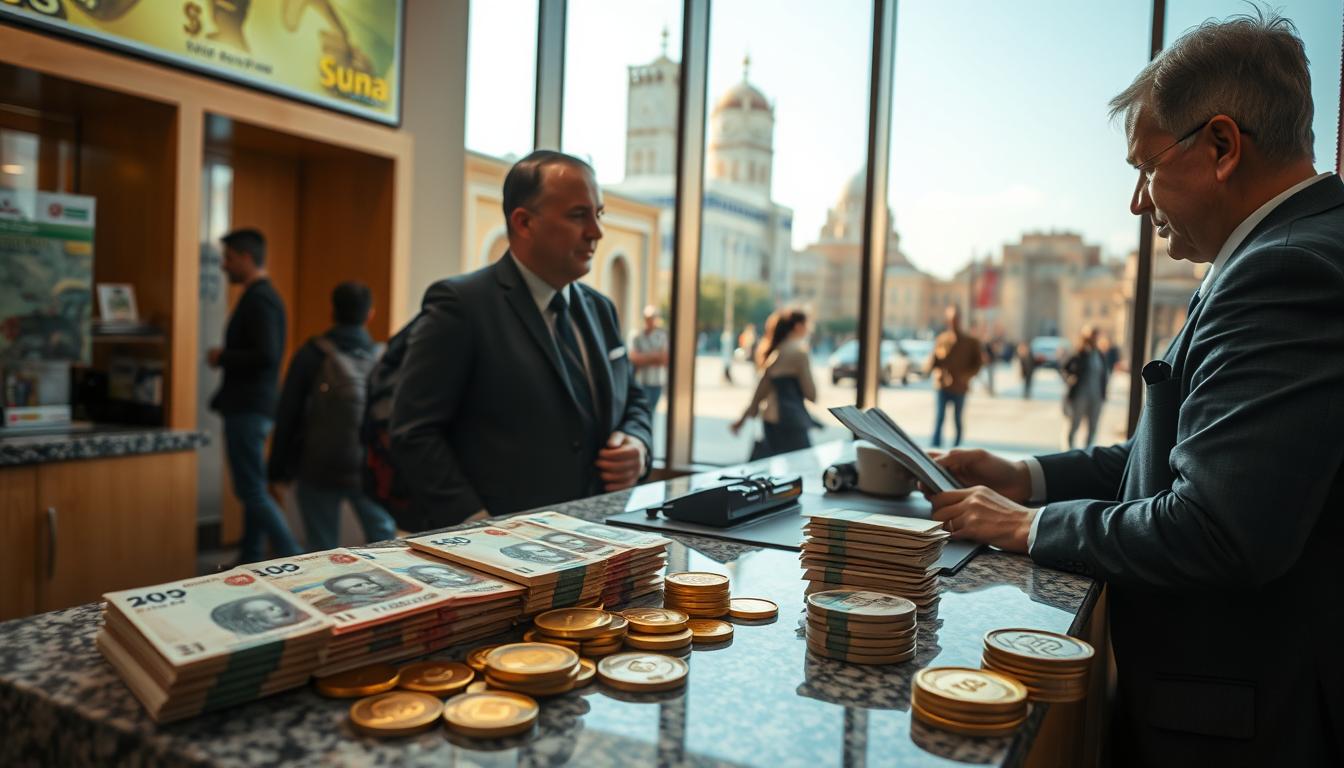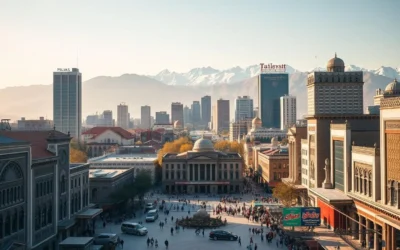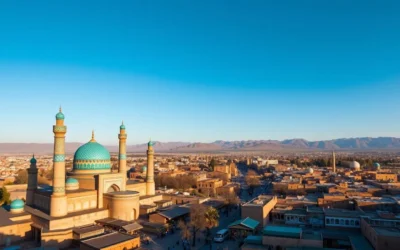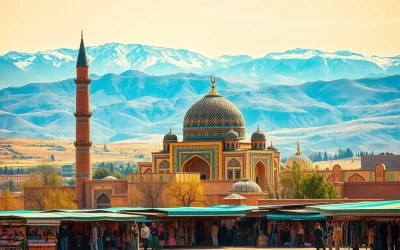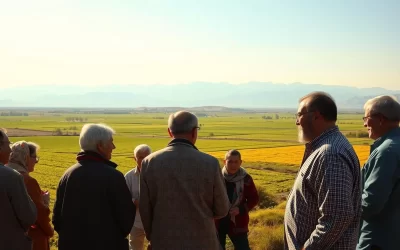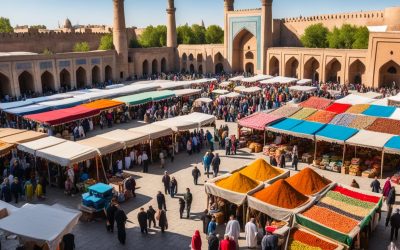Did you know that $1 USD equals approximately 12,300 Uzbekistani Som? This fascinating exchange rate is just one of the many things you’ll discover in this guide. As a country along the historic Silk Road, Uzbekistan is gaining popularity for its rich history and vibrant culture.
Understanding the local currency and payment methods is crucial for a smooth trip. The Uzbekistani Som is the official currency, and knowing how to exchange your money can save you time and effort. You’ll find official exchange booths and ATMs in most cities, making it easy to get cash when needed.
This guide will walk you through everything from budgeting tips to the best ways to handle your money safely. Whether you’re planning a short visit or a longer stay, you’ll find practical advice to make your journey hassle-free. Let’s dive into the details and ensure you’re well-prepared for your adventure!
Understanding Uzbekistan’s Currency System
The Uzbekistani Som is the official currency, and understanding its system can make your trip smoother. This currency is essential for daily transactions, from buying meals at local restaurants to exploring bustling markets. Knowing how to handle it ensures a hassle-free experience.
Overview of the Uzbekistani Som
The Uzbekistani Som comes in banknotes ranging from 1,000 to 100,000 som. Coins are also in circulation, though they are less commonly used. Higher denominations like the 50,000 and 100,000 som notes are ideal for larger purchases, while smaller notes are perfect for everyday expenses.
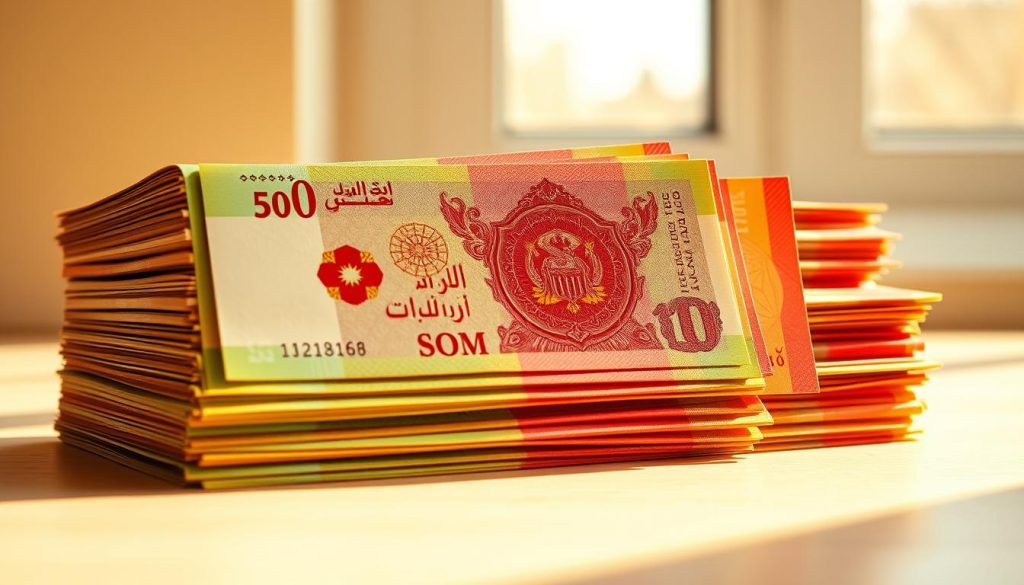
When exchanging money, it’s best to use crisp, undamaged banknotes. Many banks and exchange booths in major cities like Tashkent prefer clean bills. This helps avoid delays or additional fees during the process.
Maintaining Accurate Exchange Rates
Keeping an eye on live exchange rates is crucial. Apps like Xe.com provide real-time updates, ensuring you get the best value for your dollar. This is especially helpful when planning your daily budget or making larger purchases.
Official banks often offer better rates than street exchange booths. However, booths are more convenient and accessible. Always compare rates before making a decision. This small step can save you a lot of money during your trip.
In recent years, the country has made significant changes to its currency system. These updates have simplified transactions and improved accessibility for travelers. With the right knowledge, you can navigate the system with ease and focus on enjoying your adventure.
Navigating Payment Methods in Uzbekistan
Cash or card? Deciding on the best payment method can make your journey easier. In this historic Silk Road country, payment options vary depending on where you are. Understanding the balance between cash and card usage ensures a hassle-free experience.
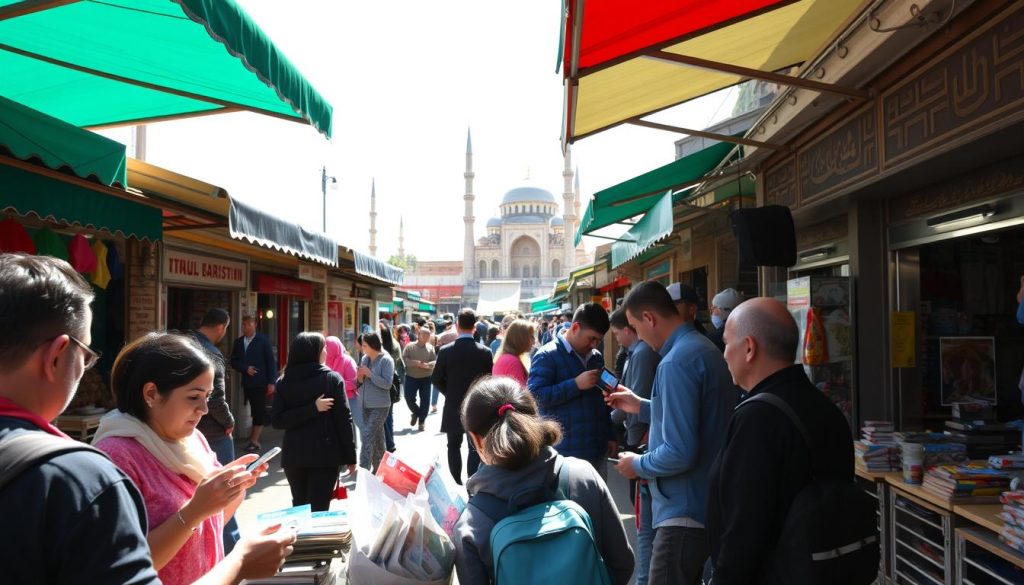
Cash Economy vs. Card Payments
Cash is still the preferred method in many places, especially in smaller towns and local markets. You’ll need it for street vendors, small restaurants, and rural areas. However, in major cities like Tashkent, Samarkand, and Bukhara, credit cards are widely accepted in hotels, upscale restaurants, and larger stores.
Using a card can be convenient, but there are some drawbacks. Many ATMs charge fees for withdrawals, and your bank may add conversion charges. To avoid these, consider using a travel money card with low international fees. Always choose to pay in the local currency to get the best exchange rate.
- Cash: Essential for smaller towns, markets, and street vendors.
- Cards: Accepted in major cities and tourist areas, but watch for fees.
- Travel Money Card: A great option to manage fees and exchange rates.
Security is another factor to consider. Carrying large amounts of cash can be risky, so it’s wise to split your money and keep it in different places. Using a mix of payment methods ensures you’re prepared for any situation.
For the best experience, plan ahead. Carry enough cash for daily expenses in smaller towns, but rely on your card in larger cities. With the right preparation, you can focus on enjoying your trip without worrying about payment hassles.
Managing Money on the Silk Road
Exploring the historic Silk Road requires smart money management to ensure a seamless journey. From bustling cities to remote villages, knowing how to handle your currency and avoid scams is essential. This guide offers practical tips to keep your finances secure and your trip stress-free.
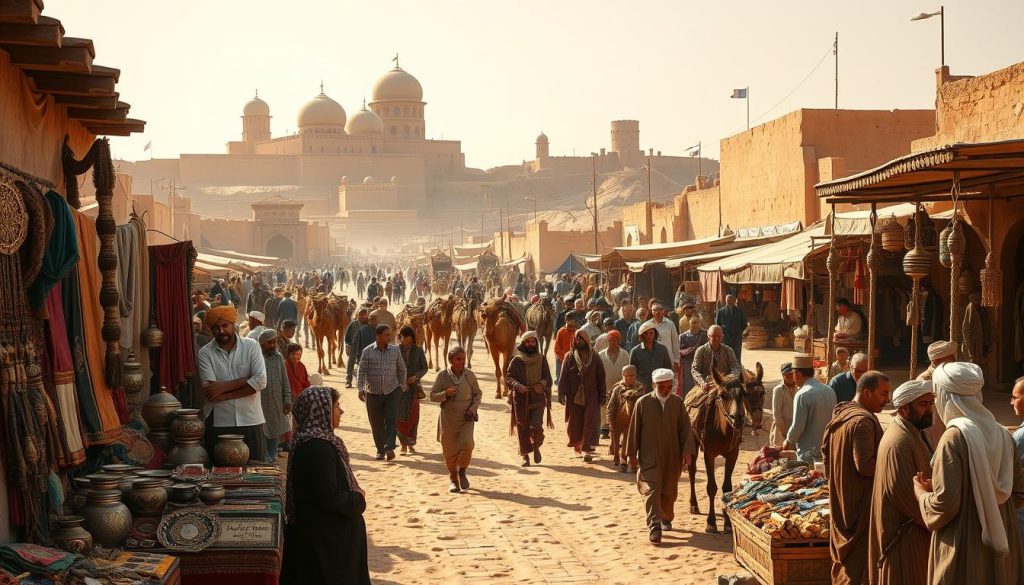
Using Official Exchange Booths and Banks
When exchanging money, always use official banks or authorized booths. These locations offer secure transactions and competitive exchange rates. Avoid black market exchanges, as they often involve counterfeit bills or hidden fees.
Bring crisp, undamaged banknotes for the best experience. Many banks in major cities prefer clean bills, which speeds up the process. Apps like Xe.com can help you track live rates, ensuring you get the most value for your currency.
Tips to Avoid Counterfeit and Scams
Counterfeit money is a concern in some areas. Always verify banknotes by checking for watermarks, security threads, and holograms. If something feels off, trust your instincts and request a different bill.
Be cautious of strangers offering to exchange money at “better rates.” These are often scams designed to trick unsuspecting travelers. Stick to official locations for all transactions.
Keep records of your foreign currency declarations, especially when entering or leaving the country. This documentation can be helpful if you encounter any issues with customs or banks.
By following these tips, you can focus on enjoying the rich history and culture of the Silk Road without worrying about your finances. Smart money management ensures a smooth and memorable journey.
Uzbekistan: Ultimate Travelers Guide to Currencies & Payments
Planning your budget is the first step to a stress-free journey. Knowing how much to allocate for daily expenses ensures you can enjoy your trip without financial worries. Start by listing all potential costs, from accommodations to meals and transport.
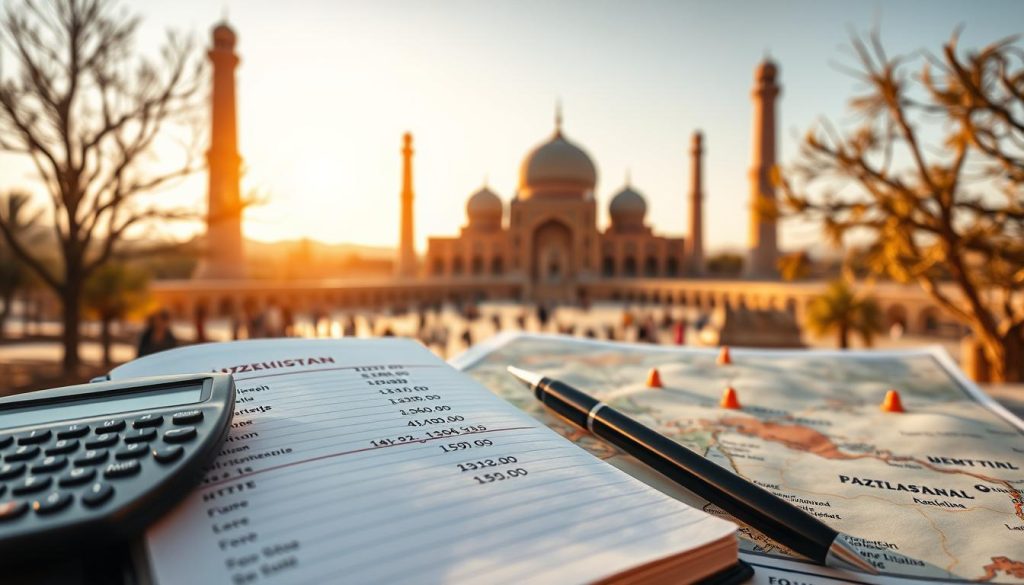
Daily Expense Breakdown
Here’s a realistic breakdown of daily costs to help you plan:
| Expense | Cost (USD) |
|---|---|
| Hostel Bed | $15 |
| Local Meal | $10 |
| Taxi Ride | $2 |
| Public Transport | $0.20 |
| Entrance Fees | $5-$10 |
These figures are based on average prices in major cities. Adjust your budget if you’re traveling to rural areas or opting for luxury stays.
Strategies for Smart Spending
To avoid overspending, prioritize your expenses. Allocate more funds to experiences you value, like guided tours or local cuisine. Use these tips to stay on track:
- Track Expenses: Use apps like Trail Wallet or Splitwise to monitor your daily spending.
- Limit Cash Withdrawals: Withdraw larger amounts to reduce ATM fees.
- Choose Local Eateries: Street food and small restaurants are cheaper than tourist spots.
“A well-planned budget ensures you can focus on the journey, not the costs.”
By setting priorities and tracking your spending, you can enjoy your trip without breaking the bank. Whether you’re exploring historic sites or savoring local flavors, smart budgeting makes every moment count.
Preparing Your Travel Money Card
A travel money card can simplify your financial planning abroad. It’s a secure and convenient way to manage your expenses without carrying large amounts of cash. These cards often offer competitive exchange rates and low fees, making them a smart choice for international trips.
Top Card Options for International Travelers
Several travel money cards stand out for their features and benefits. Here’s a comparison of popular options available in the United States:
| Card | Supported Currencies | ATM Fees | Foreign Transaction Fees |
|---|---|---|---|
| Wise | 40+ | Low after free limit | None |
| Chime | USD only | $2.50 out-of-network | None |
| Monzo | USD only | None | None |
| Netspend | USD only | Varies | ~4% |
Wise is ideal for multi-currency needs, while Monzo and Chime are great for fee-free withdrawals. Netspend is an option but comes with higher fees.
How to Apply from the United States
Applying for a travel money card is straightforward. Follow these steps:
- Visit the card provider’s website or download their app.
- Register by providing your personal details and verifying your identity.
- Order the physical card, which typically arrives in 7-21 days.
- Load funds into your account using your bank account or debit card.
Once activated, you can use the card for contactless payments, ATM withdrawals, and online transactions. Most cards also offer security features like transaction alerts and fraud protection.
“Using a travel money card ensures you get the best exchange rates and avoid unnecessary fees.”
Choose a card that aligns with your spending habits and travel needs. Whether you prioritize low fees, multi-currency support, or ease of use, there’s a card for every traveler. With the right preparation, you can focus on enjoying your journey without financial stress.
Transportation and Daily Expense Insights
Getting around efficiently is key to making the most of your time in this vibrant region. Whether you’re exploring bustling cities or remote villages, understanding your transportation options can save you both money and time. From trains to taxis, here’s a breakdown of the most common ways to travel and their associated costs.
Train, Bus, and Taxi Costs Explained
Trains are a popular and affordable way to travel between major cities. For example, a second-class ticket from Tashkent to Bukhara costs around $7, while a high-speed train ticket is approximately $16. Buses and minibusses, known as Damas, are another budget-friendly option, with fares as low as $0.10 per kilometer.
Taxis are widely available and convenient, especially in urban areas. Apps like Yandex Go make it easy to book rides and avoid haggling over prices. On average, taxi fares are around $0.30 per kilometer, making them a cost-effective choice for short trips.
| Transportation | Cost (USD) |
|---|---|
| Train (Tashkent to Bukhara) | $7-$16 |
| Bus/Minibus | $0.10/km |
| Taxi | $0.30/km |
Public transit, like the metro in Tashkent, is another great option. A single metro ticket costs just $0.15, making it one of the cheapest ways to get around the city. Always carry small bills or use a card for seamless transactions.
For longer journeys, consider booking tickets in advance, especially for buses and trains. This ensures you get the best rates and avoid last-minute hassles. With these tips, you can navigate the region with ease and focus on enjoying your travel experience.
Accommodation and Dining Costs in Uzbekistan
From cozy hostels to luxurious hotels, your stay can be as comfortable as you want. Whether you’re on a tight budget or looking for a more upscale experience, there’s something for everyone. Understanding the cost of lodging and meals helps you plan better and enjoy your travel without stress.
Hostel, Guesthouse, and Hotel Price Ranges
Accommodation options vary widely across cities like Tashkent, Bukhara, and Samarkand. Dorm beds in hostels typically range from €8 to €16 per night, making them a great choice for budget-conscious travelers. Private rooms in guesthouses cost around €15, offering more privacy without breaking the bank.
For those seeking luxury, upscale hotels in major cities charge between €50 and €100 per night. These often include amenities like breakfast, Wi-Fi, and airport transfers. Booking platforms like Booking.com or Airbnb can help you find the best deals, especially during off-peak seasons.
Local Cuisine: Meals and Market Prices
Exploring local cuisine is a highlight of any trip. A basic meal at a mid-range restaurant costs around €4 to €6, while a three-course dinner can be as low as €10. Traditional dishes like plov and shashlik are not only delicious but also budget-friendly.
For those who prefer cooking, local markets offer fresh produce at affordable prices. A loaf of bread costs about €0.30, and a kilogram of vegetables is around €1. Bargaining is common in markets, so don’t hesitate to negotiate for better deals.
Prices can vary depending on the location and season. Tourist areas tend to be more expensive, while smaller towns offer lower costs. Planning ahead and using booking platforms can save you a lot of money.
Tips for Financial Safety and Convenience
Staying financially secure while traveling is essential for a worry-free experience. Whether you’re withdrawing cash or using digital payment methods, taking a few precautions can save you from unnecessary stress. Here’s how to manage your money safely and efficiently.
Using ATMs Safely
When withdrawing cash, always use ATMs located in secure areas like banks or well-lit public spaces. Avoid standalone machines in secluded spots, as they may be tampered with. Shield your PIN while entering it, and never share it with anyone.
Check for skimming devices before inserting your card. If something looks suspicious, find another machine. Reputable ATMs often have security cameras and clear signage, making them a safer option.
Setting Up Mobile Wallets
Mobile wallets like Apple Pay or Google Pay offer a convenient way to make contactless payments. To set one up, download the app and link your card. Ensure your phone is password-protected for added security.
Before using a mobile wallet, verify its legitimacy. Stick to well-known platforms to avoid scams. This method reduces the need to carry large amounts of cash, keeping your funds safer.
Preventing Fraud
Be cautious of suspicious ATMs or payment systems. Always monitor your transaction alerts via your card’s app to stay informed about any unauthorized charges. Regularly check exchange rate fees when using digital payment options to avoid hidden costs.
Keep emergency cash separate from your main wallet. This ensures you have backup funds in case of theft or loss. By following these tips, you can focus on enjoying your travel without financial worries.
Conclusion
Navigating finances in a new place can feel overwhelming, but with the right tools, it’s easy to stay on track. Understanding the local currency and exchange rates ensures you get the most value for your money. Using a mix of cash and card payments helps you manage daily expenses efficiently, especially in bustling cities.
Budgeting wisely and using a travel card with low fees can save you a lot of hassle. Whether you’re exploring historic sites or enjoying local cuisine, these tips ensure a smooth experience. Always prioritize safety by using secure ATMs and monitoring your transactions.
This guide is your go-to resource for managing finances confidently. With these insights, you’re ready to enjoy your journey without financial stress. Safe travels and happy exploring!
The above is subject to change.
Check back often to TRAVEL.COM for the latest travel tips and deals.
Here are some Tours & Sightseeing suggestions that might pique your interests!
